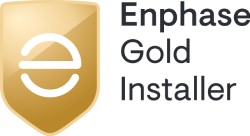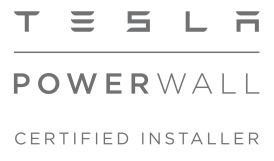Great install. No issues. Followed the time line they gave me. Works great. Had my first negative electric bill.
Solar power is usable energy generated from the sun in the form of electric or thermal energy. Solar energy is captured in a variety of ways, the most common of which is with photovoltaic solar panels that convert the sun’s rays into usable electricity.
History of Solar Energy
Solar technology isn’t new. Its history spans from the 7th Century B.C. to today. We started out concentrating the sun’s heat with glass and mirrors to light fires. Today, we have everything from solar powered buildings to solar-powered vehicles.
7th Century B.C.
A magnifying glass is used to concentrate the sun’s rays to make fire and to burn ants.
1st to 4th Century A.D.
The famous Roman bathhouses in the first to fourth centuries A.D. had large south-facing windows to let in the sun’s warmth
1200s A.D.
Ancestors of the Pueblo people, called the Anasazi, in North America lived in south-facing cliff dwellings that captured the winter sun.
1767
Swiss scientist, Horace de Saussure, was credited with building the world’s first solar collector, later used by Sir John Herschel to cook food during his South Africa expedition in the 1830s.
1876
William Grylls Adams and Richard Evans Day discovered that selenium produces electricity when exposed to light. Although selenium solar cells failed to convert enough sunlight to power electrical equipment, they proved that a solid material could change light into electricity without heat or moving parts.
1954
Bell Labs developed the first silicon photovoltaic cell. Although solar energy had previously been captured and converted into usable energy through various methods, only after 1954 did solar power begin to become a viable source of electricity to power devices over extended periods of time.
1970s
Dr. Elliot Berman, with help from the Exxon Corporation, designed a significantly less costly solar cell, bringing the price down from $100 per watt to $20 per.
Although adoption of solar energy was slow at first, a number of state and federal incentives and policies contributed to driving down the cost of solar panels low enough to become more widely adopted. At this point, solar power accounts for enough capacity to power 11 million of the 126 million households in the country.
How It All Works
A solar panel (also known as a solar module) consists of a layer of silicon cells, a metal frame, a glass casing unit, and wiring to transfer electric current from the silicon. Silicon (atomic #14 on the periodic table) is a non metal with conductive properties that allows it to absorb and convert sunlight into usable electricity. When light hits a silicon cell, the light causes electrons in the silicon to be set in motion, initiating a flow of electric current. This is known as the “photovoltaic effect,” and it describes the general functionality of solar panel technology.
The science of generating electricity with solar panels boils down to this photovoltaic effect. It was first discovered in 1839 by Edmond Becquerel and can be thought of as a property of specific materials (known as semiconductors) that allows them to create an electric current when they are exposed to sunlight.
The photovoltaic process works through the following broad steps:
1. The silicon photovoltaic solar cell absorbs solar radiation
2. When the sun’s rays interact with the silicon cell, electrons begin to move, creating a flow of electric current
3. Wires capture and feed this direct current (DC) electricity to a solar inverter to be converted to alternating current (AC) electricity
What Are Solar Panels
In 1954, scientists at Bell Telephone discovered that silicon, an element found in sand, created an electric charge when it was exposed to sunlight. This discovery led to the development of solar cells that captured the sun’s energy and turned it into electricity. Since then, the technology has evolved, and solar power systems now provide incredibly attractive financial benefits for homeowners, businesses and non-profits across the United States.
Thanks to solar panels, we have access to an inexhaustible source of power – the sun. Throughout the day, the cells on your solar panels absorb the energy from sunlight. Circuits within the cells collect that energy and turn it into direct current (DC) electricity. The DC electricity is passed through a device called an inverter to convert it to alternating current (AC) electricity used by most homes and businesses. You can use that electricity in your home, store it with a solar battery, or send it back to the grid.













